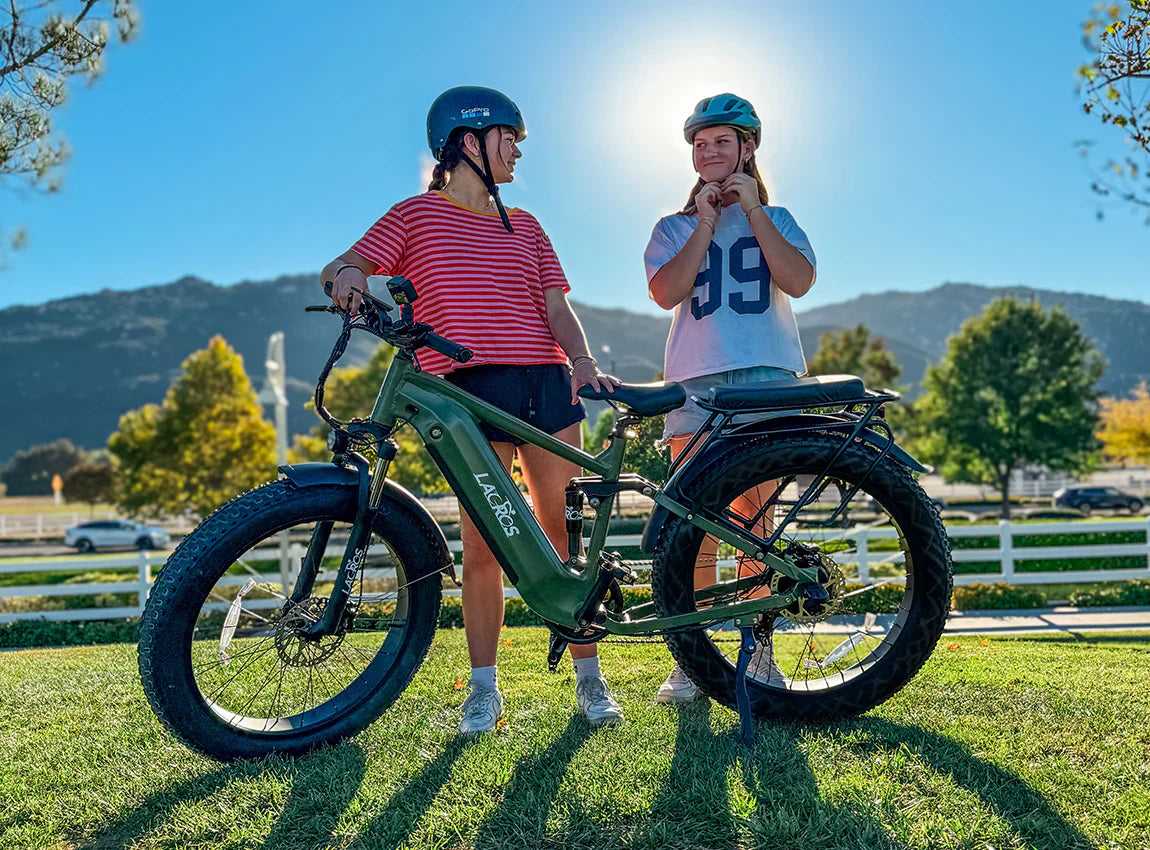Understanding Electric Bike Weight Limits is crucial for both safety and performance. Whether you are a new rider, a heavy rider, or plan to carry cargo or passengers, knowing your e-bike’s capacity ensures a smooth and safe riding experience. In this guide, we’ll cover everything you need to know about Electric Bike Weight Limits, how to calculate safe loads, and tips for riding safely under load.
Understanding E-Bike Weight Limits
An Electric bike's Weight Limit refers to the maximum total weight a bike can safely carry, including the rider, passengers, and any cargo. Manufacturers often include a safety margin in their published weight limits, so a bike rated for 150 lbs may safely handle more—but this margin is designed to protect both riders and the manufacturer, not to encourage overload.
Exceeding the weight limit increases stress on the frame, wheels, motor, and other components, potentially reducing performance and lifespan. Choosing a bike with a strong frame—steel or reinforced aluminum—and a motor with adequate torque (not just high speed) is especially important for heavier riders.
Also read: Why Are Electric Bikes So Heavy? Understanding E-Bike Weight
Why Weight Limits Matter: Safety, Performance, and Battery Life
Weight limits are essential for:
- Safety: Overloading your e-bike increases the risk of component failure, such as broken spokes, cracked welds, or frame damage. Braking efficiency may decrease, and tires are more likely to blow out.
- Performance: Exceeding weight limits reduces motor efficiency and makes hills harder to climb. Bikes with higher torque motors and reinforced frames handle extra weight better.
- Battery Life: Carrying excessive weight can cause the motor to draw more power, reducing battery life and range over time.
Even small deviations above the recommended limit—10–25%—can have measurable consequences similar to riding aggressively or with more force than the bike is designed to handle.
Also read: How Much Weight Can an Electric Bike Carry? Cargo, Passengers, and Safety Tips
Common Weight Ratings for Different E-Bike Types
Different e-bike types have varying Electric Bike Weight Limits:
- City/Commuter E-Bikes: Typically support 220–250 lbs (100–113 kg).
- Mountain E-Bikes: Usually 250–300 lbs (113–136 kg), depending on suspension and frame strength.
- Fat Tire E-Bikes: Provide extra stability and higher weight capacity, suitable for heavier riders or off-road use. Examples include:
- Thunder (Mountain E-Bike): Supports up to 400 lbs (181 kg).
- Cyclone (Commuter E-Bike): Supports up to 400 lbs (181 kg).
- Pinecone (Folding Fat Tire E-Bike): Supports up to 300 lbs (136 kg).
All three models are fat tire bikes, offering better traction and durability under heavier loads. Always check manufacturer specifications and consider bikes specifically designed for your weight and riding style to ensure safety and performance.
Also read: How Much Does a Fat Tire Electric Bike Weigh?

Calculating Your E-Bike’s Safe Load
To safely calculate your Electric Bike Weight Limit:
- Check Manufacturer Specs: Start with the official maximum weight. Remember, this includes rider, passengers, and cargo.
- Add Cargo and Accessories: Baskets, racks, and child seats count toward the total weight.
- Consider Terrain: Uphill rides or rough trails increase stress on the bike.
- Factor in Safety Margins: Even if your weight slightly exceeds the published limit, doing so increases risk; small overages are not without consequence.
Performing a safe calculation ensures you ride responsibly and minimize wear on the bike.
Things to Consider When Choosing an E-Bike Weight Capacity
When selecting an e-bike, consider:
- Your Body Weight: Stay within or close to the recommended limit to avoid excessive stress.
- Motor Power and Torque: Heavier riders benefit from higher torque motors (e.g., 750–1000W) to handle inclines safely.
- Frame Material: Steel or reinforced frames are more durable under heavy loads.
- Rider Experience and Riding Style: Aggressive riding under heavy load can shorten component lifespan.
Choosing the right bike with adequate weight capacity protects both rider and e-bike performance.
Carrying Cargo and Passengers Safely on Your E-Bike
When carrying extra weight:
- Secure Your Load: Use racks, baskets, or trailers to distribute weight evenly.
- Balance the Bike: Keep heavy items low and centered to maintain stability.
- Adjust Riding Style: Brake earlier, reduce speed in corners, and monitor tire pressure frequently.
- Inspect Your Bike Regularly: Check tire pressure, spokes, brake adjustment, and wheel nuts—especially after long or heavy rides.
Even if your weight is within the limit, neglecting safety checks can cause premature component wear.
Lacros Ebikes for Heavy Riders and Heavy-Duty Options
For riders near or above typical weight limits, choosing a bike designed for heavier loads is essential. Fat tire e-bikes are particularly well-suited because they provide extra stability, traction, and durability.
- Thunder (Mountain E-Bike): Supports up to 400 lbs (181 kg), designed for off-road and mountain riding. Its fat tires and strong frame make it ideal for heavier riders seeking adventure on rugged terrain.
- Cyclone (Commuter E-Bike): Also supports up to 400 lbs (181 kg), offering excellent stability and torque for carrying heavier loads while riding on various terrains.
- Pinecone (Folding Fat Tire E-Bike): Supports up to 300 lbs (136 kg), combining portability with fat tire durability, suitable for urban commuting or weekend rides.
Ready to find the perfect e-bike for your needs? Explore our recommended fat tire models like the Thunder, Cyclone, and Pinecone, and experience safe, powerful rides tailored for every rider. Check them out now!
Expanding Your Cargo-Carrying Options
If you occasionally exceed standard weight limits:
- Use cargo trailers instead of loading the bike frame directly.
- Opt for child seats or modular cargo boxes rated for your bike.
- Upgrade tires, wheels, or suspension components if manufacturer-approved.
These strategies let you carry more safely without compromising the Electric Bike Weight Limits of your bike.
Conclusion
Understanding and respecting Electric Bike Weight Limits is essential for safety, performance, and long-term durability. Choose the right bike type, calculate your total load carefully, inspect your bike regularly, and consider heavier-duty options if needed. Riding responsibly ensures you enjoy your e-bike safely—whether riding solo, with passengers, or carrying cargo—while protecting both yourself and your investment.





Share:
How to Buy an E-Bike Online: The Ultimate 2025 Guide for Beginners
Lacros Ebike Black Friday Deals: Epic Rides Meet Epic Savings